Abstract
Trypanosomosis is a disease complex which affects both humans and animals in sub-Saharan Africa, transmitted by the tsetse fly and distributed within the tsetse belt of Africa. But some trypanosome species, for example, Trypanosoma brucei evansi, T. vivax, T. theileri and T. b. equiperdum are endemic outside the tsetse belt of Africa transmitted by biting flies, for example, Tabanus and Stomoxys, or venereal transmission, respectively. Trypanocidal drugs remain the principal method of animal trypanosomosis control in most African countries. However, there is a growing concern that their effectiveness may be severely curtailed by widespread drug resistance. A minimum number of six male cattle calves were recruited for the study. They were randomly grouped into two (T. vivax and T. congolense groups) of three calves each. One calf per group served as a control while two calves were treatment group. They were inoculated with 105 cells/mL parasites in phosphate buffered solution (PBS) in 2 mL. When parasitaemia reached 1 × 107.8 cells/mL trypanosomes per mL in calves, treatment was instituted with 20 mL (25 mg/kg in 100 kg calf) ascofuranone (AF) for treatment calves, while the control ones were administered a placebo (20 mL PBS) intramuscularly. This study revealed that T. vivax was successfully cleared by AF but the T. congolense group was not cleared effectively.
Contribution: There is an urgent need to develop new drugs which this study sought to address. It is suggested that the AF compound can be developed further to be a sanative drug for T. vivax in non-tsetse infested areas like South Americas.
Keywords: ascofuranone; trypanocide; Trypanosoma congolense; Trypanosoma vivax; antibiotic.
Introduction
African trypanosomosis is a disease complex in humans and animals that is caused by protozoan haemoflagellates of the genus Trypanosoma. The disease is transmitted by tsetse flies (Glossina spp.) that are found within the tsetse belt of Africa. But some trypanosome species such as Trypanosoma brucei evansi, T. vivax, T. theileri and T. b. equiperdum are endemic outside the tsetse belts, where they are transmitted by biting flies, for example, Tabanus and Stomoxys (horseflies and stable flies). The disease is discontinuously spread over 10 million km2 and affects populations across 37 sub-Saharan countries. In general, the animal African trypanosomosis (AAT) that affects livestock is over 100 to 150-fold more prevalent than the trypanosome infections that cause human African trypanosomosis (HAT) (Jordan 1976; Simarro et al. 2011). Where animal infection occurs, there are widespread economic and social impacts in Africa, and are now increasingly becoming a problem in South America and parts of Asia also (Steverding 2008). T. congolense, T. vivax and T. brucei are the dominant species causing AAT (Afewerk et al. 2000; Mungube et al. 2012).
Since there is no vaccine and one will not be available soon because of variable surface glycoproteins (VSGs) that allow the parasite to evade immune defence system of their hosts, the only viable anti-trypanosomosis measures available are chemotherapies (Babokhov et al. 2013). Diminazene aceturate (DA) is today the most commonly used trypanocide in cattle, sheep and goats, because of its activity against both T. congolense and T. vivax in Africa, and it has relatively low toxic side effects (Giordani et al. 2016). The DA has also been effectively used against Surra in the Philippines (Reid 2002). The recommended therapeutic dose is 3.5 mg/kg for AAT caused by T. congolense and T. vivax (but 7 mg/kg against resistant isolates) administered by intramuscularly or subcutaneously (Connor 1992).
Drug resistance against animal trypanosomes has also been reported all over the world. For example, T. vivax strains refractory to DA were identified in South Americas, where the compound is the first line drug to treat these infections (Desquesnes, Rocque & Peregrine 1995). Diminazene aceturate treatment failure against T. evansi infections in horses and mules in Thailand has also been reported, following decades of use (Tuntasuvan et al. 2003), and the same was reported in Burkina Faso also (Clausen et al. 1992). T. evansi strains resistant to suramin and quinapyramine have been reported in China as well as in Africa (Liao & Shen 2010; Zhou et al. 2004).
Because of the challenges associated with the tsetse control, drugs have remained the most practical means of controlling the infections in livestock in many areas. No new veterinary drugs for the treatment of AAT have been released since 1985 (Anene, Onah & Nawa 2001), and there is increasing resistance to the existing trypanocides. Thus, there is an urgent need to develop new drugs. Ascofuranone (AF, Figure 1) is fungal secondary metabolite of various filamentous fungi, including Acremonium egyptiacum that exhibit diverse physiological activities, including antivirus, antitumour, anti-inflammatory, and hypolipidaemic activities (Araki et al. 2019; Magae et al. 1982). Most notably, AF is a strong inhibitor of cyanide-insensitive alternative oxidases (Minagawa et al. 1997; Shiba et al. 2013), and a promising drug candidate against African trypanosomosis (Nihei, Fukai & Kita 2002). In previous studies, anti-trypanosome activity in vitro and treatment efficacy against trypanosomosis using mice model were conducted of AF (Yabu et al. 1998, 2003, 2006). In addition, the AF was co-administered with glycerol which seemed to enhance its efficacy.
Therefore, the current study involved in vivo monitoring to assess the treatment efficacy of AF against T. congolense and T. vivax in experimentally infected calves.
Materials and methods
Study design and pre-experimental animal care
This study focussed on the efficacy of AF antibiotic using three parameters that is, parasitaemia, percent packed cell volume (%PCV), and body weights. Six 1-year old male calves (crosses of Friesian cattle breed) were internally sourced in Kenya Agricultural and Livestock Research Organization (KALRO) and recruited for the study. Their weights ranged from 80 kg to 120 kg body weight (bwt). The animals were acclimatised for 3 weeks in an animal barn house, fed on hay and supplied with clean water ad libitum. They were clinically examined, dewormed and vaccinated against Foot and Mouth Disease. The calves were provided with mineral salt licks and concentrates at the start of the experiment.
After acclimatisation, the calves were randomly assigned into two groups of three each. Group 1 comprised T. congolense group and group 2 the T. vivax group (hereinafter the Tc group and the Tv group, respectively). One calf in each group served as a control, while two calves were the treatment group. Each animal was ear-tagged and given a unique identification number (Tv1, Tv2, Tv3 for the Tv group, and Tc1, Tc2, Tc3 for the Tc group). The two groups were kept in separate enclosures in the barn house. The animals were screened for trypanosome using the buffy coat technique (Murray, Murray & McIntyre 1977) and pre-infection data on packed cell volume (PCV) and weight collected.
Experimental infection and monitoring
A rodent adapted T. vivax isolate (KETRI 2632) and T. congolense KETRI 4029 (IL1180) were used in the experiment. The parasites were separately expanded in two donor Swiss white mice immuno-suppressed with cyclophosphamide at 100 mg/kg per day for three consecutive days (300 mg/kg total dose) (Wombou Toukam et al. 2011). The donor mice were examined daily for parasitaemia using the rapid matching method (Herbert & Lumsden 1976). At peak parasitaemia (1 × 107.8 trypanosomes/mL for the T. vivax and 1 × 106 trypanosomes/mL for the T. congolense), the donor mice were anaesthetised using carbon dioxide, the parasites were collected through cardiac puncture in 10% ethylenediamine tetraacetic acid (EDTA) treated tubes and quantified using improved Neubauer chamber method (Petana 1963). The parasites in blood were diluted to 1.0 × 105 trypanosomes/mL with Phosphate-buffered-Saline-Glucose (PSG) (44 mM NaCl, 57 mM Na2HPO4, 3 mM KH2PO4, 55 mM glucose) pH 8.0 solution. At day 0, all calves in the two groups were each inoculated into the jugular vein with 2 mL of the diluted blood containing 1.0 × 105 trypanosomes/mL. The parasitaemia in both the treated (AF) and control (DA) groups were compared prospectively.
Treatment
The Tv and Tc groups were monitored for parasitaemia three times a week by collecting and examining ear vein blood using the buffy coat technique and haematocrit centrifugation technique for PCV determination (Woo 1970). At peak parasitaemia (1 × 107.8 trypanosomes per mL), calves in the treatment group, Tv1, Tv2, Tc1 and Tc2 were treated with AF at a dose rate of 25 mg/kg per day for seven days equivalent to 20 mL of AF suspension (2.5 g AF in 20 mL of tween-PBS with glycerol) per day, administered intramuscular (IM). The drug suspension was divided into two 10 mL portions and injected at two different sites to avoid any adverse reaction on the injection sites. Calves in the control group Tv3 and Tc3 were given a placebo (20 mL PBS) IM for seven consecutive days. On the last day of AF treatment, the control calf, Tv3, was treated with DA (Norbrook Kenya Ltd) at a dose rate of 3.5 mg/kg. The calves were monitored for 43 days post infection (dpi) for the Tv group and 46 dpi for the Tc group. At the end of observation period, 0.2 mL of blood from the jugular vein of each of the six calves was sub-inoculated into Swiss white mice (five mice per calf) for further parasitological monitoring for 30 days. At the end of period, the mice were sacrificed and a post-mortem examination of spleen was done.
Data management and statistical analysis
Data were recorded in a laboratory notebook and later entered in MS Excel. They were analysed in R software version 4.3.2 (Core Team, 2023) using Kruskal-Wallis sum rank test (Chi-square) between the treatment group (Tv1, Tv2, Tc1, Tc2) and control calves (Tv3 and Tc3, respectively).
Ethical considerations
The study was approved by KALRO Biotechnology Research Institute (KALRO-BioRI) Institutional Animal Care and Use Committee (IACUC) No. C/BioRI/4/325/II/56.
Results
T. vivax group
The experiment begun on day one after intravenous (IV) inoculation of the trypanosomes in the calves. Ascofuranone was injected in the calves when parasitaemia reached 107.8 cells/mL. On day 2 post treatment, one of the calves (Tv2) turned negative, while Tv1 parasitaemia went down to 107.5 cells/mL. In the placebo calf, the parasitaemia went up 108.4 cells/mL. All the AF treatment calves were negative on haematocrit centrifugation technique (HCT) on day 3 post treatment, while control calf parasitaemia was still high. On the seventh day of AF treatment, the control calf was administered with DA and on the eighth day post treatment, all calves returned a negative result. The calves were further observed for parasitaemia for another 30 days to check for any relapse and then again in mice for another 30 days. In this case, there was no relapse and in conclusion, the AF compound was successful in clearing the parasites in the two calves in the treatment group. In terms of parasitaemia, there was no difference between the control and AF treatment group (p = 0.096) during treatment period by Kruskal-Wallis rank sum test (Figure 2). At the end of the experiment, the sub-inoculated mice with blood from the three calves did not exhibit parasitaemia and were sacrificed to check for post-mortem changes of the spleen. The spleens of all the mice appeared normal.
 |
FIGURE 2: Parasitaemia of T. vivax infection trends. Ascofuranone treatment, day 6th to 12th in calves Tv1 and Tv2. Day 12, diminazene aceturate treatment in control calf Tv3, 2023. |
|
By the start of the experiment, the calves Tv1, Tv2 and Tv3 weighed 95 kg, 100 kg and 120 kg, respectively. After they were challenged and during the treatment period, the weights dropped to 85 kg, 90 kg and 105 kg, respectively. But by the end of the experiment, the calves had mean weights of 90 kg, 95 kg and 115 kg, respectively. The means were different between the treated calves and the control (p = 0.0026 Kruskal-Wallis rank sum test) (Figure 3).
 |
FIGURE 3: The mean weights of the Tv1 and Tv2 (treatment), and Tv3 (control), ascofuranone treatment period day 6th to 12th, 2023. |
|
There were significant differences in the percentage packed cell volumes between the treatment and the control groups as shown in Figure 4 (p < 0.05).
 |
FIGURE 4: Percent packed cell volume profiles in the Tv group calves. Tv1 (Treatment), Tv2 (Treatment) and Tv3 (control). Treatment with ascofuranone started on day 6 and ended on day 12, 2023. |
|
T. congolense group
The day 1 of the experiment began on the day of IV inoculation of the trypanosomes in the calves. Ascofuranone compound was injected into the calves when parasitaemia reached 107.8 cells/mL on HCT, but 107.2 cells/mL on a wet smear. Parasitaemia went down to 107.5 cells/mL in the treated calves of 2 days post treatment, while in the placebo (Tc3) animal it remained at 107.8 cells/mL. On the fifth day post treatment, Tc1 relapsed and all the calves were positive. On the seventh day of AF treatment, all calves were still positive but calf Tc3 was treated with DA, and on the eighth day post treatment only calf Tc1 was positive with parasites. On day 21, all calves returned a negative test for parasites and %PCVs improved to be normal (PCV > 25). On day 40 of the monitoring, the two AF calves in the treatment group (Tc1 and Tc2) relapsed and the subsequent 3 days their %PCV appeared to be deteriorating more especially Tc2 where it reached 21%. Because we were approaching the last day of observation but on day 43, Tc2 PCV was recorded 18% and we decided to administer DA at a dose 3.5 mg/bwt – 7 mg/bwt. There were significant differences on the %PCV between the AF treated calves and the control (p < 0.05) (Figure 5).
 |
FIGURE 5: Percent packed cell volume profiles in the Tc group calves. Tc1 (Treatment), Tc2 (Treatment) and Tc3 (control). Treatment with Ascofuranone started on day 9 and ended on day 15, 2023. |
|
On the last day of observation (Day 46), all calves were negative of parasites; however, we sub-inoculated the calves’ blood into mice for further monitoring. All the mice were negative of trypanosome parasites after 30 days of monitoring in mice. Thereafter, the mice were sacrificed to check for post-mortem changes, especially, on the spleen. There were no significant differences between the AF calves and the control one (DA) (p = 0.29), whereby the AF failed to effectively cure the treatment calves as shown in Figure 6.
 |
FIGURE 6: Parasitaemia T. congolense infection trends in Tc1 and Tc2 (treatment), Tc3 (control). Ascofuranone treatment, day 9 to day 15, 2023. |
|
Because of the delays in the propagation of T. congolense parasites, the calves gained weight while in the barn with one recording a weight of almost 120 kg. By the time the calves were challenged with the parasites, Tc1 and Tc2 weighed 107 kg and 90 kg, respectively. The weights decreased marginally while awaiting the parasitemia to go high then weights increased slightly after the administration of AF. At the end of the experiment, the calves had a mean weight of 112 kg, 93 kg, and 120 kg for Tc1, Tc2 and Tc3, respectively. In terms of parasitaemia, there were clear differences between the control group and the AF treated group having experienced a relapse. In the Tc group, though all the calves were treated with DA, their blood were sub-inoculated into mice. No parasitaemia was recorded in mice and also their spleens appeared normal upon sacrificing the mice.
Overall, the means of the treated calves and the control were different (p < 0.05) (Figure 7). However, it was noted that the control group had a higher initial bwt than the rest in the treatment group.
 |
FIGURE 7: The mean weights of the Tc1 and Tc2 (treatment group), and Tc3 (control group), 2023. |
|
Discussion
Most studies on T. vivax trypanosome species were conducted in in vivo laboratory models; however, very few strains of the same have been isolated that readily infect rodents, and most published in vivo work on this species comprises the very few mouse-infective strains, the main one being T. vivax Y486 and its derivatives (Gibson 2012). Against this backdrop, the isolate used in the study was rodent-adapted which would have originated from Nigeria (Yamazaki et al. 2023) and the AF effectively cured the experimentally infected calves.
Whereas the AF failed to effectively cure the Tc calves, we could however find successful results in previous studies by Yabu et al. (1998, 2003, 2006) which showed treatment efficacy of AF against T. b. brucie (Tbb) and Tv. Trypanosomosis caused by both species are treated by AF dose-dependently in mice. In addition, AF showed treatment efficacy against AAT caused by Tc in mice (Pers. comm.). Co-administration of glycerol could enhance the treatment efficacy because glycerol inhibits glycerol kinase activity, which is a metabolic pathway to produce ATP when AF block trypanosomal alternative oxidase. Because the sensitivity of AF is different among Trypanosoma species (Tv is most sensitive; Tbb moderate; Tc less sensitive), the treatment efficacy by AF against AAT model is also different among the aetiological species of trypanosomes. Based on the previous studies, the co-administration of glycerol and AF might show higher treatment efficacy. Indeed, at one point, AF appeared to have cured the Tc calves but for a relapse to occur. This merits future research to further unravel the right dosage of glycerol and AF drug co-administration to clear the parasites. Another limitation to the current study was the use a low sample size, which gave unreliable results.
Trypanosoma congolense is considered the most pathogenic trypanosome in cattle (followed by T. vivax). Apart from bovines, Tv can affect sheep, goats, horses and camels as well (Osorio et al. 2008). Now that the results for AF are promising for Tv, the drug can be further developed as an alternative because of increasing antimicrobial resistance. For all the calves whose blood were sub-inoculated into mice, no parasitaemia was recorded. At the end of the experiment, the mice were sacrificed and their spleens were checked for any enlargement. Because all spleens appeared normal, it was a further indication that there was no drug resistance against DA serendipitously. As demonstrated in our study, it was able to clear parasites within 24 h. Parasitaemia measurements were the most critical in the current study albeit monitoring the other two parameters (%PCV and weights). Because the experimental observation period was short, there were no major variations in weights and to some extent on %PCVs. However, while measuring the %PCV, it important to note that when the Tc calves at some point became anaemic and thus needed treatment intervention with DA.
To the best of our knowledge, this is the first report on AF in vivo studies in cattle. Taken altogether, this study revealed that the two experiments were conducted successfully in parallel, but the Tc group would not be cleared by the AF compound effectively. It is suggested that the compound can be developed further to be a sanative drug for Tv in non-tsetse infested areas like South Americas. In addition, future research is needed by testing the AF antibiotic on T. evansi, and check its efficacy which would as well, augment why the need to develop the compound for the aforementioned areas. Again, if feasible in the lab, the AF can be manipulated biosynthetically to come up with a compound that is effective across the Trypanosoma species.
Acknowledgements
The authors acknowledge the technologists, staff and herders of Kenya Agricultural and Livestock Research Organization (KALRO) who assisted in the experiments but to mention a few including Mr Bernard Wanyonyi and Mr Patrick Kundu. We also sincerely thank Mr Macdonald Biwott for the statistical analysis of the data.
Competing interests
The authors declare that they have no financial or personal relationships that may have inappropriately influenced them in writing this article.
Authors’ contributions
S.K. contributed in visualising and the methodology. M.K.M. contributed in methodology and investigations. C.K.J. contributed in methodology, investigations and acquiring resources. K.K., N.I. and S.K. contributed in visualising, methodology and acquiring resources.
Funding information
Joint research between Nagasaki University and Obihiro University of Agriculture and Veterinary Medicine.
Data availability
Data supporting the findings of this study are available from the corresponding author, K.S., on request.
Disclaimer
The views and opinions expressed in this article are those of the authors and are the product of professional research. It does not necessarily reflect the official policy or position of any affiliated institution, funder, agency, or that of the publisher. The authors are responsible for this article’s results, findings, and content.
References
Afewerk, Y., Clausen, P.H., Abebe, G., Tilahun, G. & Mehlitz, D., 2000, ‘Multiple-drug resistant Trypanosoma congolense populations in village cattle of Metekel district, North-West Ethiopia’, Acta Tropica 76(3), 231–238. https://doi.org/10.1016/S0001-706X(00)00108-X
Anene, B.M., Onah, D.N. & Nawa, Y., 2001, ‘Drug resistance in pathogenic African trypanosomes: Wat hopes for the future?’, Veterinary Parasitology 96(2), 83–100. https://doi.org/10.1016/S0304-4017(00)00427-1
Araki, Y., Awakawa, T., Matsuzaki, M., Cho, R., Matsuda, Y., Hoshino, S. et al., 2019, ‘Complete biosynthetic pathways of ascofuranone and ascochlorin in Acremonium egyptiacum’, Proceedings of the National Academy of Sciences 116(17), 8269–8274. https://doi.org/10.1073/pnas.1819254116
Babokhov, P., Sanyaolu, A.O., Oyibo, W.A., Fagbenro-Beyioku, A.F. & Iriemenam, N.C., 2013, ‘A current analysis of chemotherapy strategies for the treatment of human African trypanosomosis’, Pathogens and Global Health 107(5), 242–252. https://doi.org/10.1179/2047773213Y.0000000105
Clausen, P.H., Sidibe, I., Kaboré, I. & Bauer, B., 1992, ‘Development of multiple drug resistance of Trypanosoma congolense in Zebu cattle under high natural tsetse fly challenge in the pastoral zone of Samorogouan, Burkina Faso’, Acta Tropica 51(3–4), 229–236. https://doi.org/10.1016/0001-706X(92)90041-U
Connor, R.J., 1992, The diagnosis, treatment and prevention of animal trypanosomosis under field conditions. In Programme for the Control of African Animal Trypanosomosis and Related Development: Ecological and Technical Aspects, FAO Animal Production and Health Paper No. 100, Food and Agriculture Organisation of the United Nations (FAO), Rome.
Desquesnes, M., Rocque, S. & Peregrine, A., 1995, ‘French Guyanan stock of Trypanosoma vivax resistant to diminazene aceturate but sensitive to isometamidium chloride’, Acta Tropica 60(2), 133–136. https://doi.org/10.1016/0001-706x(95)00117-w
Gibson, W., 2012, ‘The origins of the trypanosome genome strains Trypanosoma brucei brucei TREU 927, T. b. gambiense DAL 972, T. vivax Y486 and T. congolense IL3000’, Parasites Vectors 5, 71. https://doi.org/10.1186/1756-3305-5-71
Giordani, F., Morrison, L.J., Rowan, T.G., De Koning, H.P. & Barrett, M.P., 2016, ‘The animal trypanosomiases and their chemotherapy: A review’, Parasitology 143(14), 1862–1889. https://doi.org/10.1017/S0031182016001268
Herbert, W. & Lumsden, W., 1976, ‘Trypanosoma brucei: A rapid “matching” method for estimating the host’s parasitemia’, Experimental Parasitology 40(3), 427–431. https://doi.org/10.1016/0014-4894(76)90110-7
Jordan, A., 1976, ‘Tsetse flies as vectors of trypanosomes’, Veterinary Parasitology 2(1), 143–152. https://doi.org/10.1016/0304-4017(76)90059-5
Liao, D. & Shen, J., 2010, ‘Studies of quinapyramine-resistance of Trypanosoma brucei evansi in China’, Acta Tropica 116(3), 173–177. https://doi.org/10.1016/j.actatropica.2010.08.016
Magae, J., Hosokawa, T., Ando, K., Nagai, K. & Tamura, G., 1982, ‘Antitumor protective property of an isoprenoid antibiotic, ascofuranone’, The Journal of Antibiotics 35(11), 1547–1552. https://doi.org/10.7164/antibiotics.35.1547
Minagawa, N., Yabu, Y., Kita, K., Nagai, K., Ohta, N., Meguro, K. et al., 1997, ‘An antibiotic, ascofuranone, specifically inhibits respiration and in vitro growth of long slender bloodstream forms of Trypanosoma brucei brucei’, Molecular and Biochemical Parasitology 84(2), 271–280. https://doi.org/10.1016/s0166-6851(96)02797-1
Mungube, E.O., Vitouley, H.S., Cudjoe, E.A., Diall, O., Boucoum, Z., Diarra, B. et al., 2012, ‘Detection of multiple drug-resistant Trypanosoma congolense populations in village cattle of south-east Mali’, Parasites Vectors 5, 155. https://doi.org/10.1186/1756-3305-5-155
Murray, M., Murray, P.K. & McIntyre, W.I., 1977, ‘An improved parasitological technique for the diagnosis of African trypanosomosis’, Transactions of The Royal Society of Tropical Medicine and Hygiene 71(4), 325–326. https://doi.org/10.1016/0035-9203(77)90110-9
Nihei, C., Fukai, Y. & Kita, K., 2002, ‘Trypanosome alternative oxidase as a target of chemotherapy’, Biochimica et Biophysica Acta (BBA) – Molecular Basis of Disease 1587(2–3), 234–239. https://doi.org/10.1016/S0925-4439(02)00086-8
Osorio, A.L., Madruga, C.R., Desquesnes, M., Soares, C.O., Ribeiro, L.R. & Costa, S.C., 2008, ‘Trypanosoma (Duttonella) vivax: Its biology, epidemiology, pathogenesis, and introduction in the New World – A review’, Memórias do Instituto Oswaldo Cruz 103(1), 1–13. https://doi.org/10.1590/S0074-02762008000100001
Petana, W., 1963, ‘A method for counting trypanosomes using Gram’s iodine as diluent’, Transactions of the Royal Society of Tropical Medicine and Hygiene 57, 382–383. https://doi.org/10.1016/0035-9203(63)90104-4
Reid, S.A., 2002, ‘Trypanosoma evansi control and containment in Australasia’, Trends in Parasitology 18(5), 219–224. https://doi.org/10.1016/S1471-4922(02)02250-X
Shiba, T., Kido, Y., Sakamoto, K., Inaoka, D.K., Tsuge, C., Tatsumi, R. et al., 2013, ‘Structure of the trypanosome cyanide-insensitive alternative oxidase’, Proceedings of the National Academy of Sciences U S A 110(12), 4580–4485. https://doi.org/10.1073/pnas.1218386110
Simarro, P.P., Diarra, A., Ruiz Postigo, J.A., Franco, J.R. & Jannin, J.G., 2011, ‘The human African trypanosomosis control and surveillance programme of the World Health Organization 2000–2009: The way forward’, PLOS Neglected Tropical Diseases 5(2), 1–7. https://doi.org/10.1371/journal.pntd.0001007
Steverding, D., 2008, ‘The history of African trypanosomosis’, Parasites & Vectors 1(1), 1–8. https://doi.org/10.1186/1756-3305-1-3
Tuntasuvan, D., Jarabrum, W., Viseshakul, N., Mohkaew, K., Borisutsuwan, S., Theeraphan, A. et al., 2003, ‘Chemotherapy of surra in horses and mules with diminazene aceturate’, Veterinary Parasitology 110(3), 227–233. https://doi.org/10.1016/S0304-4017(02)00304-7
Wombou Toukam, C.M., Solano, P., Bengaly, Z., Jamonneau, V. & Bucheton, B., 2011, ‘Experimental evaluation of xenodiagnosis to detect trypanosomes at low parasitaemia levels in infected hosts’, Parasite Immunology 18(4), 295–302. https://doi.org/10.1051/parasite/2011184295
Woo, P.T., 1970, ‘The haematocrit centrifuge technique for the diagnosis of African trypanosomosis’, Acta Tropica 27(4), 384–386.
Yabu, Y., Minagawa, N., Kita, K., Nagai, K., Honma, M., Sakajo, S. et al., 1998, ‘Oral and intraperitoneal treatment of Trypanosoma brucei brucei with a combination of ascofuranone and glycerol in mice’, Parasitology International 47(2), 131–137. https://doi.org/10.1016/S1383-5769(98)00011-7
Yabu, Y., Suzuki, T., Nihei, C., Minagawa, N., Hosokawa, T., Nagai, K. et al., 2006, ‘Chemotherapeutic efficacy of ascofuranone in Trypanosoma vivax-infected mice without glycerol’, Parasitology International 55(1), 39–43. https://doi.org/10.1016/j.parint.2005.09.003
Yabu, Y., Yoshida, A., Suzuki, T., Nihei, C., Kawai, K., Minagawa, N. et al., 2003, ‘The efficacy of ascofuranone in a consecutive treatment on Trypanosoma brucei brucei in mice’, Parasitology International 52(2), 155–164. https://doi.org/10.1016/S1383-5769(03)00012-6
Yamazaki, A.I., Suganuma, K., Tanaka, Y. et al., 2023, ‘Efficacy of oral administration of ascofuranone with and without glycerol against Trypanosoma congolense, Experimental Parasitology’, Experimental Parasitology 252, 108588. https://doi.org/10.1016/j.exppara.2023.108588
Zhou, J., Shen, J., Liao, D., Zhou, Y. & Lin, J., 2004, ‘Resistance to drug by different isolates Trypanosoma evansi in China’, Acta Tropica 90(3), 271–275. https://doi.org/10.1016/j.actatropica.2004.02.002
|